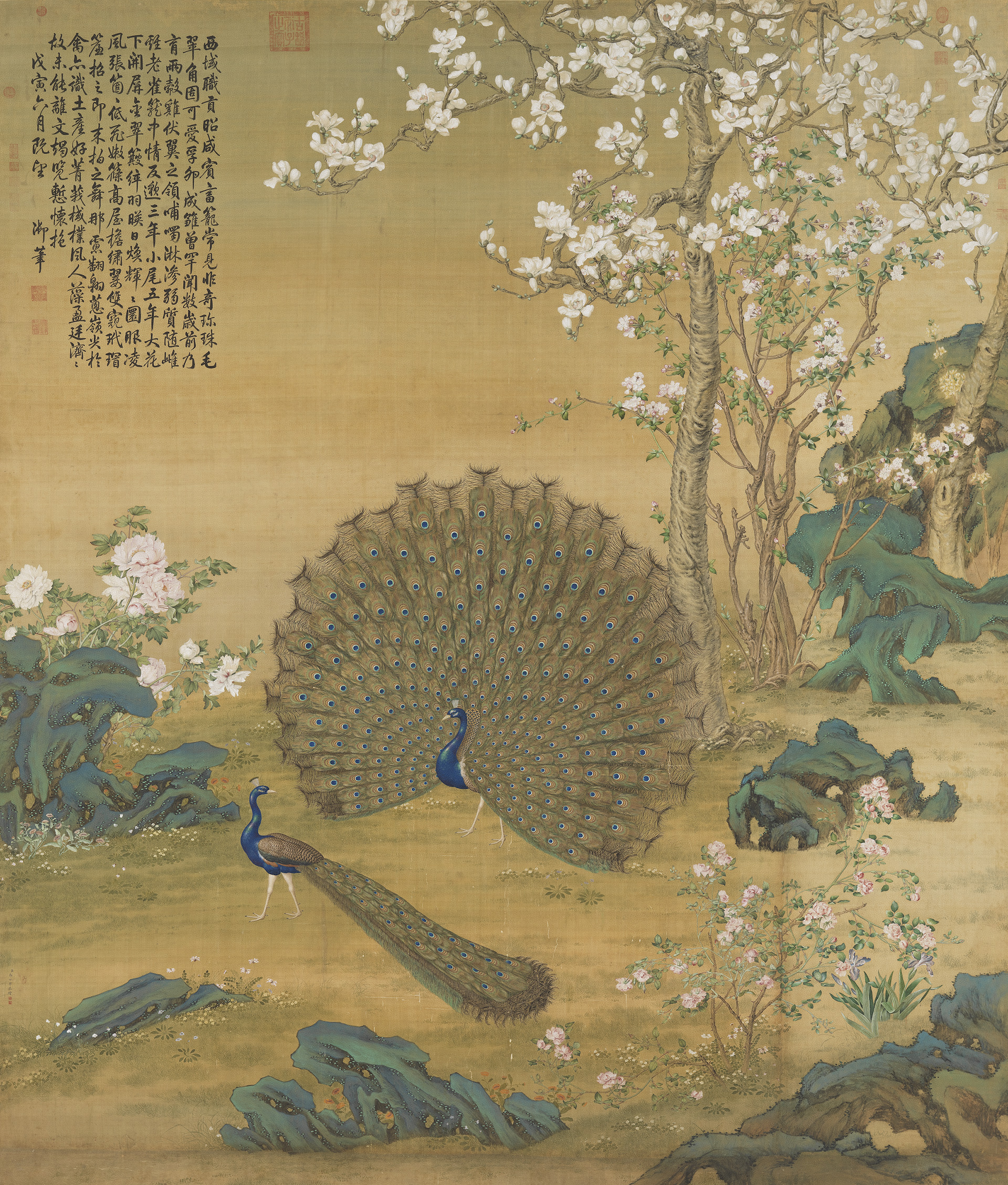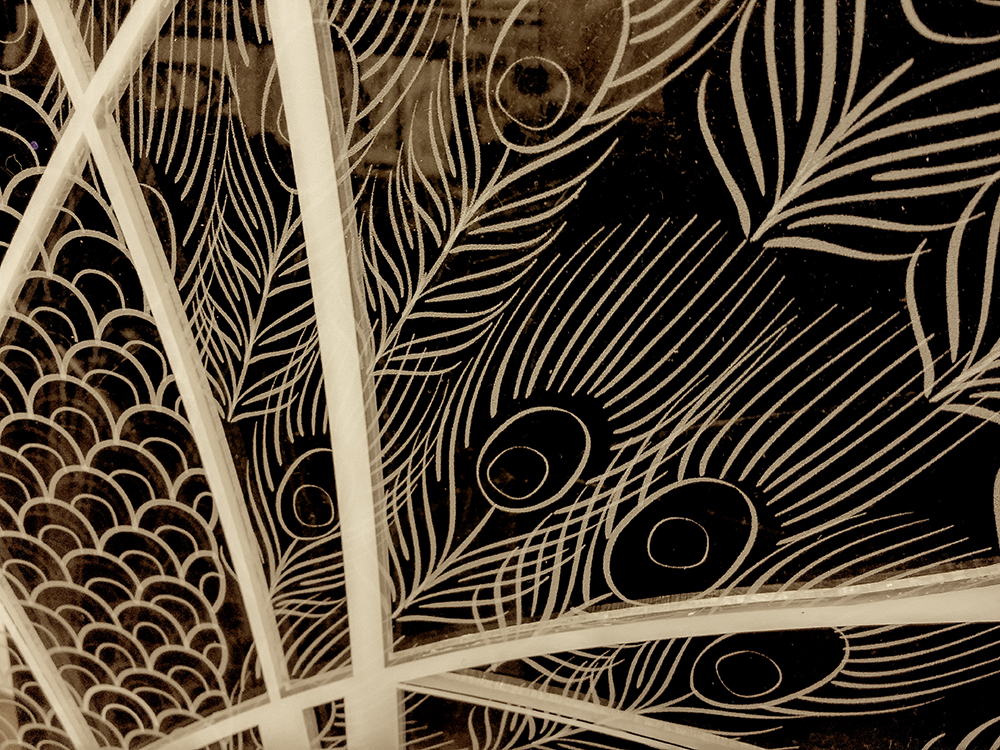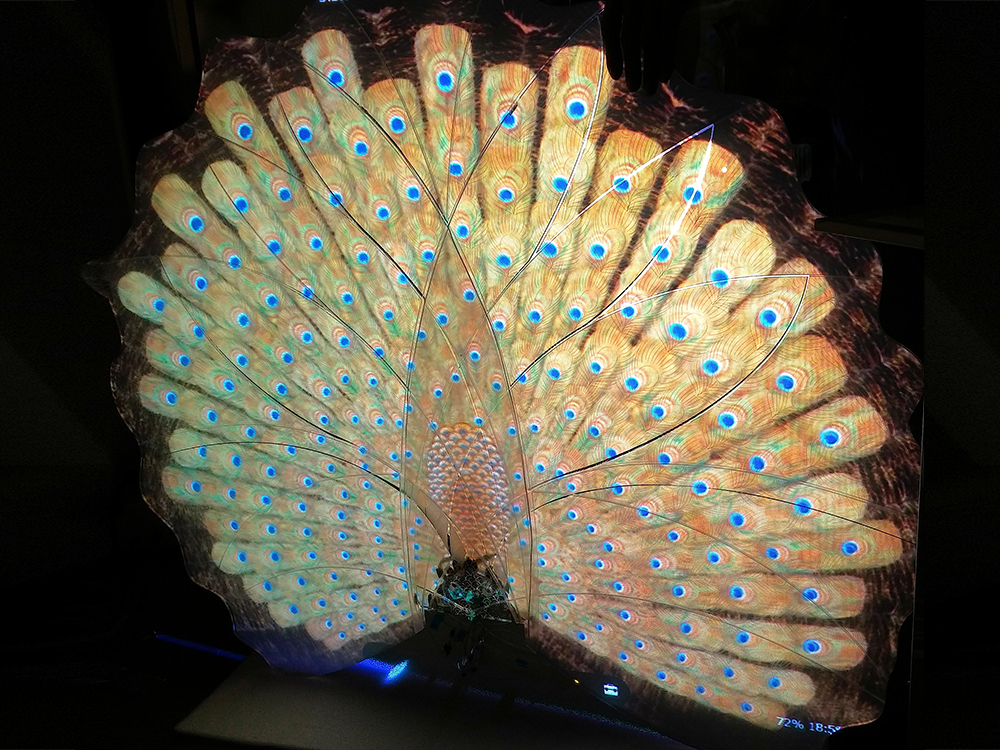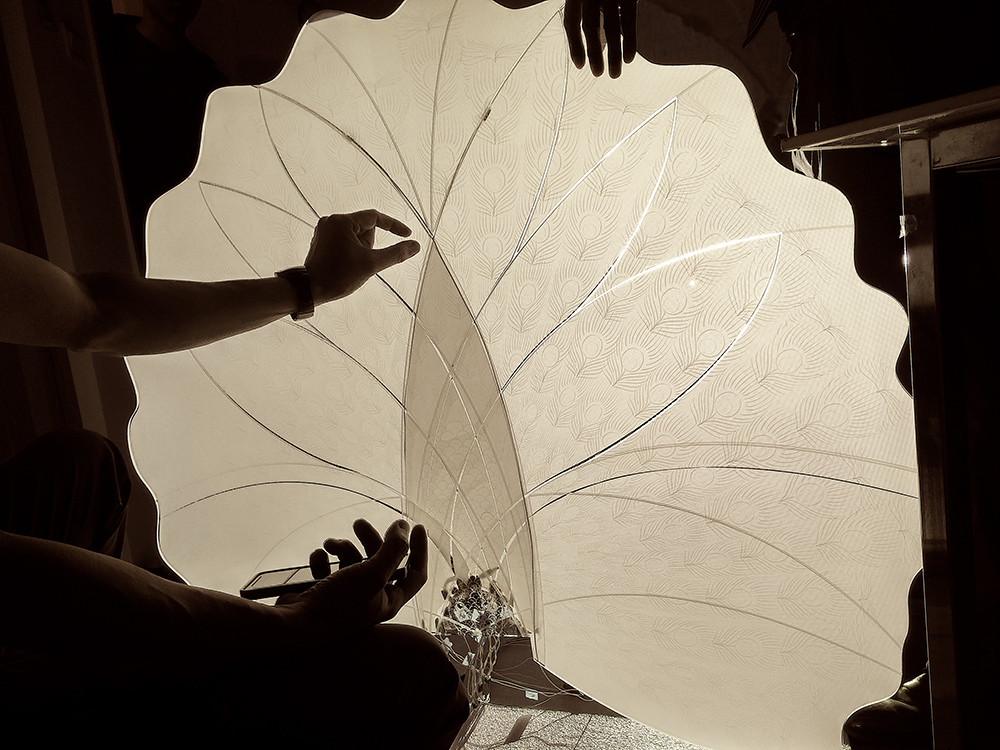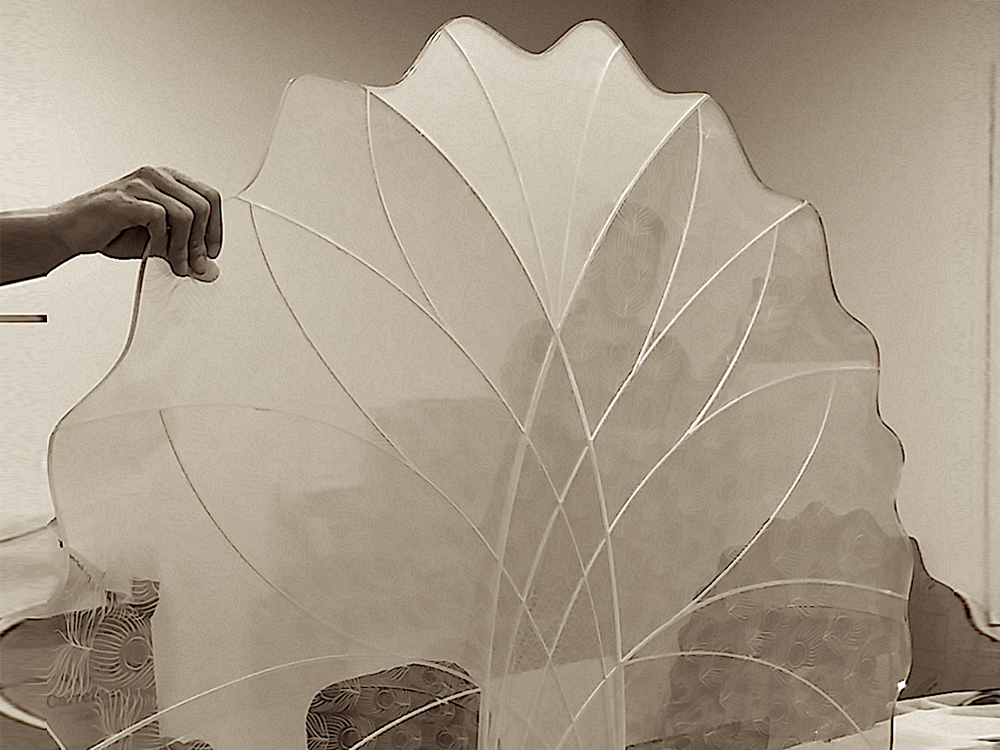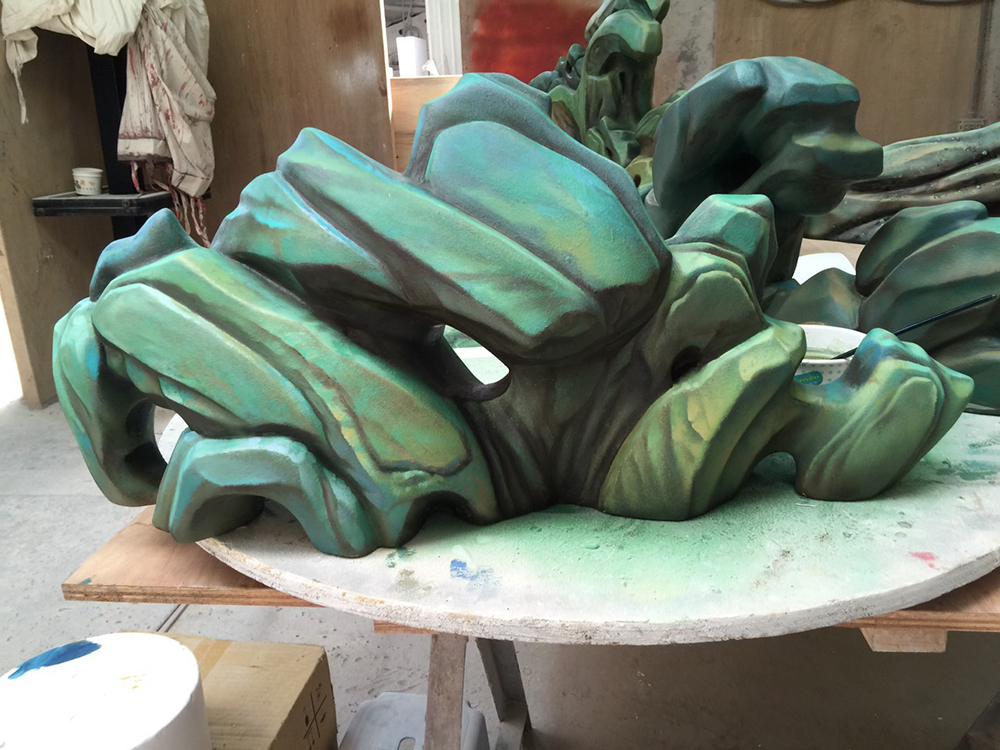A Peacock Made of Light: An Immersive Installation for The "Peacock Spreading Its Tail Feathers"
- Artist: The National Palace Museum, Wang Lien-Cheng, Louis Erwin Lee, Chang Po-Chih, Xiao Zi-Xiang
- Dance video: "Spirit of Peacock" provided and licensed by world famous dancer, Yang Li-ping
The work is inspired by "The Peacock Spreading Its Tail Feathers", and using multiple optoelectronic materials to modulate light transmitting and imaging. Combining the music from Qing court and spatial ambient sound, it simulates the scenery of day and night moreover transforms the two-dimensional painting into an interactive immersible installation situated within a multilayered, ever-changing spatiotemporal structure. The artists intend to map the new way of seeing and reconstructing the artistic space when contemporary viewers confronted with an interpretation of classical artwork with new media. In this way, they hope to explore the"visible, translucent, invisible of the Ideology, vision, context of human beings under the sublime authority of the triad of belief, power, history" and pay tribute to Castiglione with dynamic translucent illumination technique 300 years later
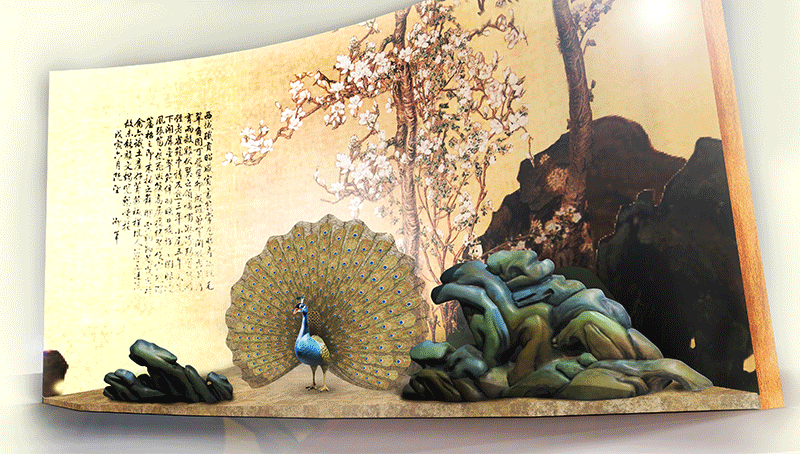
Original work of art
Peacock Spreading Its Tail Feathers
- Lang Shining (Giuseppe Castiglione, 1688-1766), Qing dynasty
- Hanging scroll, ink and colors on silk, 328 × 282 cm
The male peafowl, or peacock, is renowned for its circular display of long and opulent tail feathers, which can reach several feet in length over five years. The feathers are usually kept folded behind its body, but when expanded for display, they shine with iridescent beauty and dazzling "eye" patterns. This painting is a scene in a palatial garden designed with "blue-and-green" rocks as well as magnolia, peony, and cherry apple blossoms, further conveying the traditional auspicious idea of "wealth and nobility in halls of jade."
In the sixth lunar month of the Qianlong 23rd year (1758), Kumul from the western regions presented peacocks as tribute, the emperor composing poetry on "Peacock Spreading Its Feathers," which is transcribed on this work. On the twelfth day of the seventh month of that year, the Ruyi Hall section of the imperial workshop archives records that Giuseppe Castiglione did a large hanging scroll painting on white silk of a peacock spreading its tail feathers with background scenery by the eighteenth-century artists Fang Cong and Jin Tingbiao. The Qianlong emperor's instructions for the painting explicitly state that it should represent a "fusion" of Chinese and Western painting.
